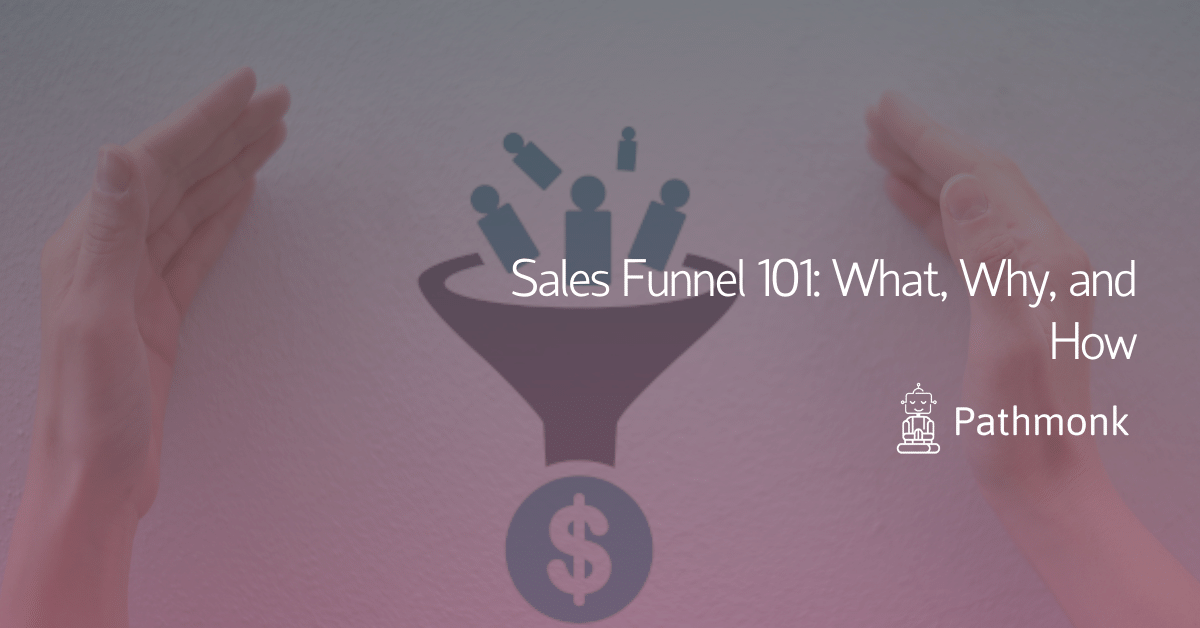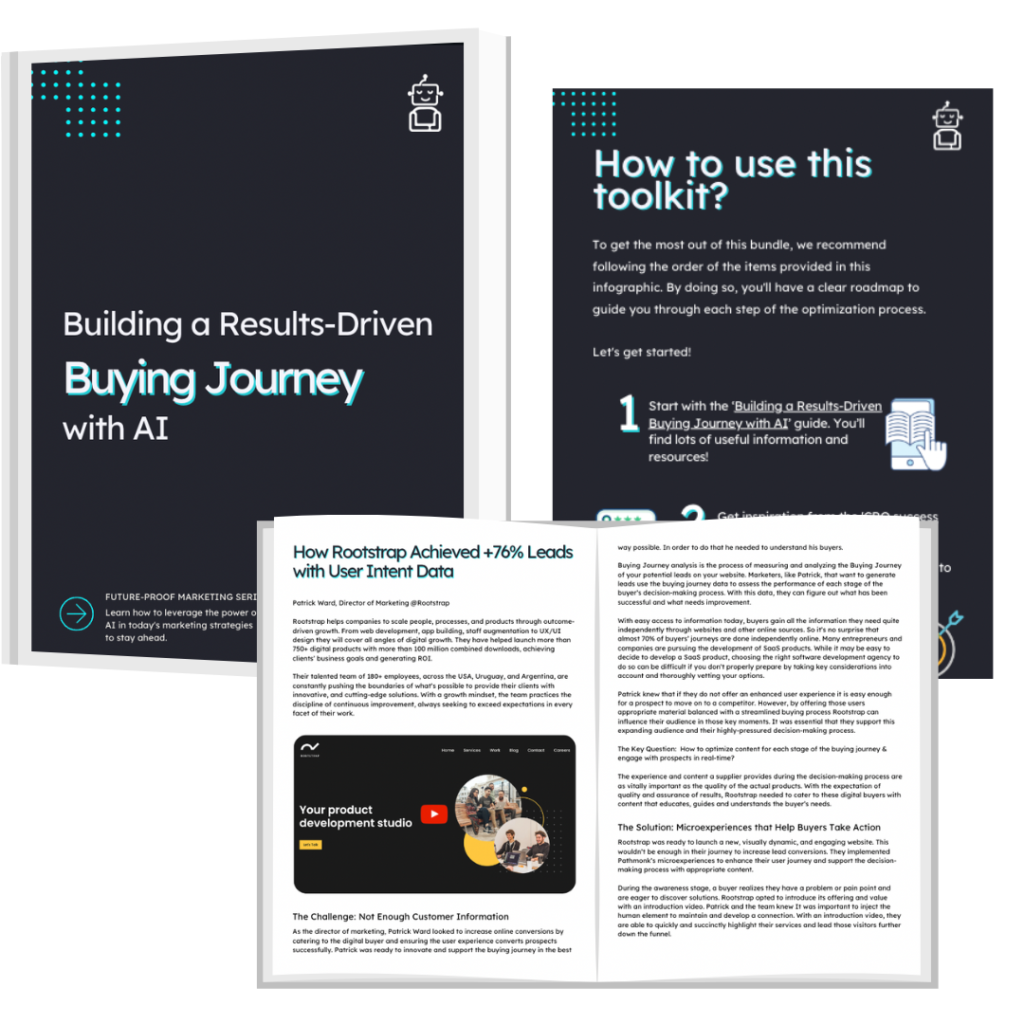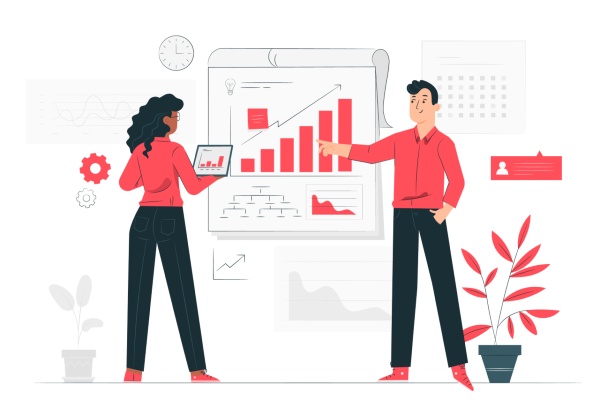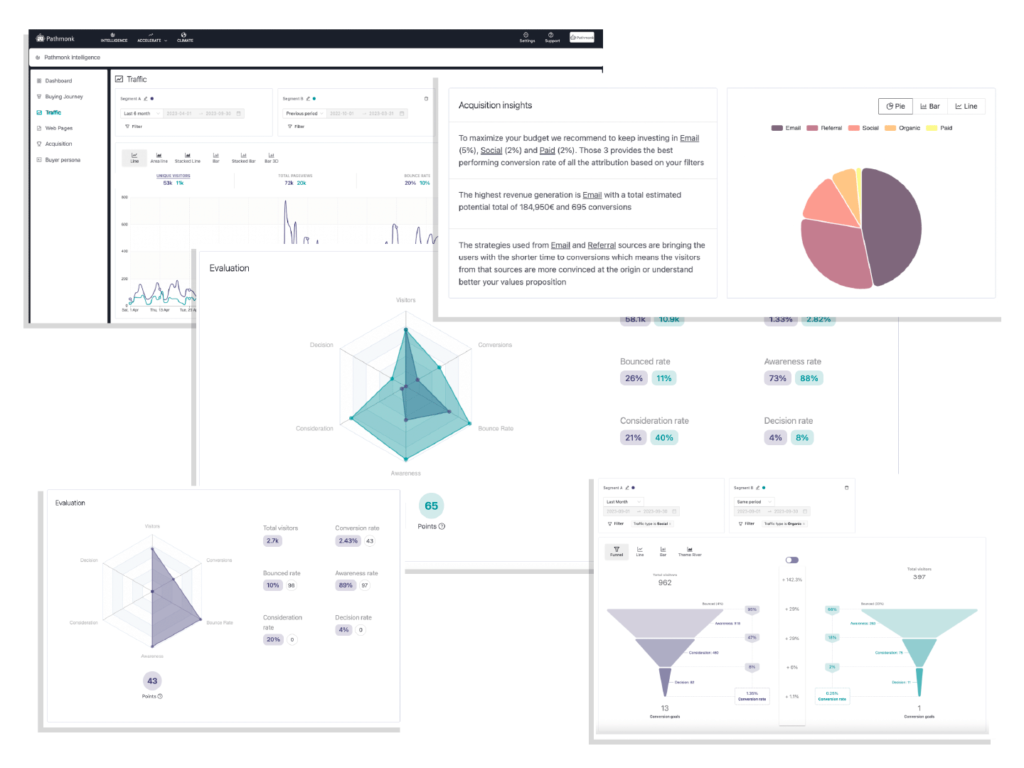Sales Funnel 101: What, Why, and How


If you are interested in growing your business, many marketing and sales specialists will ask about your company’s sales funnel. The term “sales funnel” is used commonly on sales teams. Before anyone can jump into a discussion on how to use them to grow their business, it is important to understand the what and they why behind them.
Free AI-Powered Buying Journey Toolkit
Learn how to optimize your buying journey and speed up your revenue with top strategies and invaluable resources.

What is a Sales Funnel?
A sales funnel is a tracking system that sales teams will use to convert a prospective client into a paying client. It is like shining a light on the path to show what steps to take to next in a sales conversion. There are four basic steps or stages in a sales funnel.
- Awareness
- Interest/Nurturing
- Decision
- Action
Awareness
Awareness is when a potential customer first expresses interest. Initial interest can be a website visit, a like or share on social media, a Google search, or a conversation with a person at a networking event. However a prospect first finds out about your company, they are now aware of your company and what you offer. The goal at this stage is to get them to engage again or more, however that looks for your business.
Interest
The interest stage is when the prospect has shown interest in your company. If a prospect is actively looking at your products, services, website, or giving some other sign that they are considering buying your product, this shows they are interested. The best thing a sales team can do is show up with authoritative content to show your spot as an industry expert. Help with educating so the prospect feels like they are making an informed decision. Do not be pushy or pressure them into buying.
Another name for this stage is nurturing because it is also the time for you to nurture a relationship with the lead. This can look different for each situation. For some, they are taking prospects out for lunch or sending doughnuts to an office. There are others who will be focusing on creating engaging content.
Decision
During the decision stage, the customer is ready to buy. After their research, your product or service could be one of a few options they are considering. This is when you reach out and do a little more sales focus. Send a follow up by email or have a special sale on your service to give them an offer that is hard to refuse.
Action
Action is the last stage of the sales funnel and hopefully ends with the potential customer becoming a customer. The sales team is not done once this stage is reached. An important part of building a successful company is having customer retention. Each company has their own version of what retention will look like; paying a monthly subscription, buying a product again, signing up for multiple services, etc.
These four basic stages can be adapted to each sales team. Just like no two companies are exactly alike, no two potential customers are exactly alike. It is important to give some freedom to sales teams to try different strategies within certain guidelines to pursue a lead.

Why do companies use Sales Funnels?
The sales funnel model is focused on capturing information and using it to sell their product or service. There are two main reasons why companies will use a sales funnel model; to easily track potential clients’ progress and to become a more profitable business.
Tracking potential client progress
This has always been one of the hardest tasks for a sales team. Using a model like the sales funnel has several benefits including:
- Spending time on prospective clients that are more likely to become clients.
- Having a clear plan for interacting with prospective clients.
- Providing clear sales goals and action plans as a sales team.
Sales teams are more successful when they have an actionable plan. Setting goals and being able to determine where a prospective client is in the funnel can make a sales team more efficient.
There are many ways to use a sales funnel. Many businesses like to have a salesperson assigned to individual accounts, people, or businesses that are potential clients. This way, there is a relationship to build off from start to finish. For companies who have a large focus on relationships to sell their product or service, this can be the model that makes the most sense.
Some teams like to divide up to have part of the team out in the field, capturing leads and bringing them into the funnel. Once they are in the funnel, the prospective client is passed onto another team that then focuses on setting up a free trial, building a relationship, or just being the point person if there are questions. For companies who do a high volume of merchandise selling or online work or have a short-term use for clients, they might function better using this model.
Becoming more profitable
Very few companies will turn down the chance to become more profitable. Many businesses have a sales budget to help their team go and find potential clients so they can sale their product or service. The size of the budget will vary, but the adage of needing to spending money to make money is usually true in business.
Some of the things that businesses will spend money on for sales are marketing and wooing interested buyers. For companies selling large ticket items or services, both these expenses will be more expensive.
Having a sales funnel allows companies to see how their marketing dollars are working for them. Collecting data is an important part of measuring the potential in a prospective client. This data can help you see how they found your business, which helps focus on those profitable avenues. Data can also give you clear direction on which tools are working for your business and which ones do not benefit much at all.
When it comes to wooing prospective clients, costs can add up fast. Whether you are spending money taking other business owners to lunches and golf outings or sending them mailers, it requires a portion of the budget. If the prospective buyer turns into a paying client, the costs were well spent. However, if they are not showing real signs of interest in doing business, they are wasting your time and money.
Saving money from chasing down prospective leads can provide more funds toward those who are interested and having a budget to expand to other marketing avenues, hiring a new sales team member, or reinvesting it back into the business to support growth.
How can I use a Sales Funnel to make my business profitable?
Now that you understand the importance of a sales funnel, you probably want to use it to make your business more profitable. There are several steps you can take before setting up your sales funnel strategy.
- Analyze Visitor Behavior. One of the best things your company can do is gather relevant data to help guide your strategy. Analyze a visitor’s behavior when they come to your site. Notice what pages they visit, how they found your site, where they click, when they scroll, and how much time they spend on specific pages. Other data is available too like your ideal client’s age, gender, location, and income range.
- Get their Attention. A sales funnel requires people showing interest in your business. Post a lot of interesting content, utilize PPC ads in the right places, and engage your potential and current customers. Your company can build a lot of organic traffic through creative campaigns.
- Make a Great Website. Having a great landing page ready for visitors is vital to a great first impression. Even if you do not think that your business needs a website, you should. When a potential customer wants to know more about your products or services, they will go to the internet. If you don’t have a site to educate people, someone else will do it. It is better that you put the messaging and branding out the way you want it.
These steps are important to laying the groundwork for your funnel strategy. Combining the best data with the right tools will let you optimize your efforts.
Creating your long game
Every company wants to grow and become successful fast. However, becoming an overnight sensation is not reality and can cause your business to grow too fast to keep up with demand.
The sales funnel is always working. Once someone gives your company any attention, they are entering the funnel. Since each prospect is at a different point in the process, they are more likely to make purchases at different times. Once a prospect gets through the funnel, it is important to turn your attention back to potential customers in the funnel, however that looks for your business.
Building a successful sales strategy means that sales are continually flowing. This means setting your business up for long term success. The sales funnel strategy is focused on keeping potential business building in a steady stream rather than pushing for it all at once. This helps your business grow in an upward, steady pace.
Intuitive Cookieless Analytics for Your Web
Understand your customer journey, find drop-offs, and receive actionable insights with AI.






